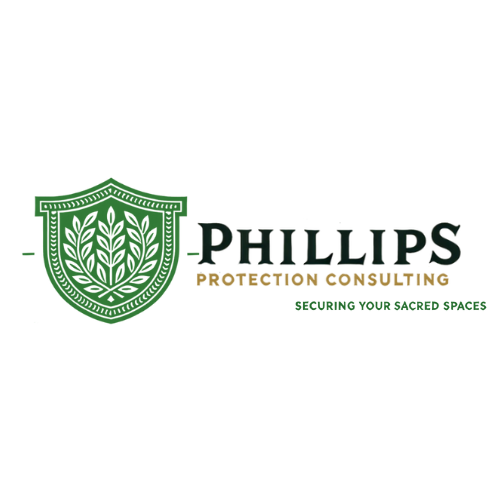Investing in a new home is an exciting milestone, but it also comes with numerous responsibilities. One critical yet often overlooked aspect is ensuring the security of your property. A comprehensive security assessment is not just an added expense; it’s a vital investment that can safeguard your new home and protect your investment in the long run. This blog will explore how a security assessment can uncover potential risks, prevent future problems, and enhance the value of your property.
Understanding the Importance of a Security Assessment
A security assessment is a thorough evaluation of your property to identify vulnerabilities and recommend measures to mitigate risks. This process involves a detailed inspection of both the interior and exterior of your home, assessing everything from locks and alarm systems to landscaping and lighting.
Uncovering Potential Risks
- Physical Vulnerabilities: A security assessment can identify weaknesses in your home’s physical structure, such as doors and windows that are easy to break into, poor quality locks, or areas that are not adequately covered by security systems.
- Environmental Risks: The assessment also considers environmental factors that might pose risks, such as overgrown shrubs that could provide cover for intruders, poorly lit areas, and potential fire hazards.
- Technological Weaknesses: In today’s digital age, security assessments also cover technological vulnerabilities, including weak Wi-Fi networks that could be exploited by hackers, outdated alarm systems, and insufficient cybersecurity measures.
Benefits of Addressing Security Issues Upfront
By identifying and addressing these risks early on, you can prevent a multitude of problems down the line. Here’s how:
- Prevention of Break-ins and Theft: Implementing recommended security measures can significantly reduce the likelihood of break-ins and theft, protecting your belongings and ensuring your family’s safety.
- Protection Against Environmental Hazards: Proper landscaping, fire alarms, and other safety measures can mitigate risks posed by environmental factors.
- Enhanced Cybersecurity: Upgrading your home’s digital security can prevent cyber intrusions and safeguard personal information.
Enhancing the Value of Your Property
A secure home is a valuable home. Here’s how a security assessment can enhance your property’s value:
Increased Marketability
- Peace of Mind for Buyers: Prospective buyers are more likely to invest in a home that has been professionally assessed and deemed secure. Knowing that the property is well-protected provides peace of mind and can make your home stand out in the market.
- Higher Resale Value: Homes with robust security measures often command higher prices. Buyers are willing to pay a premium for properties that offer enhanced safety and security features.
Insurance Benefits
- Lower Insurance Premiums: Insurance companies recognize the reduced risk associated with homes that have undergone a security assessment and implemented recommended measures. As a result, you may qualify for lower premiums, saving you money in the long run.
- Better Coverage Options: Some insurers offer better coverage options for homes with advanced security systems, providing an added layer of financial protection.
Key Components of a Security Assessment
Understanding what a comprehensive security assessment entails can help you appreciate its value. Here are the key components:
Exterior Inspection
- Perimeter Security: Evaluation of fences, gates, and other perimeter barriers to ensure they are robust and secure.
- Lighting: Assessment of outdoor lighting to ensure all entry points and vulnerable areas are well-lit.
- Landscaping: Analysis of landscaping elements that could either enhance or undermine security.
Interior Inspection
- Entry Points: Examination of doors, windows, and other entry points to ensure they are secure and equipped with quality locks.
- Alarm Systems: Review of existing alarm systems, including their placement, functionality, and integration with other security measures.
- Surveillance: Evaluation of surveillance systems, including cameras and monitoring setups.
Technological Security
- Network Security: Assessment of your home’s Wi-Fi network and other connected devices to identify and address potential cybersecurity risks.
- Smart Home Devices: Review of smart home devices to ensure they are secure and properly configured.
Implementing Security Recommendations
The true value of a security assessment lies in the implementation of its recommendations. Here’s how to effectively enhance your home’s security:
Physical Security Measures
- Upgrade Locks and Doors: Invest in high-quality locks and reinforced doors to secure entry points.
- Improve Lighting: Install motion-sensor lights and ensure all areas around your home are well-lit.
- Secure Windows: Use security film on windows or install shatterproof glass to prevent easy access.
Technological Enhancements
- Upgrade Alarm Systems: Ensure your alarm system is up-to-date and integrated with other security measures.
- Enhance Cybersecurity: Use strong passwords, enable encryption, and regularly update your network security settings.
- Smart Home Security: Configure smart home devices for maximum security, including enabling two-factor authentication and keeping software updated.
Conclusion
Investing in a security assessment for your new home is a proactive step that pays dividends in terms of safety, peace of mind, and financial benefits. By uncovering potential risks and implementing recommended measures, you not only protect your family and belongings but also enhance the value of your property. Don’t wait for a security breach to realize the importance of a secure home. Schedule a professional security assessment today and safeguard your new home investment for years to come.
